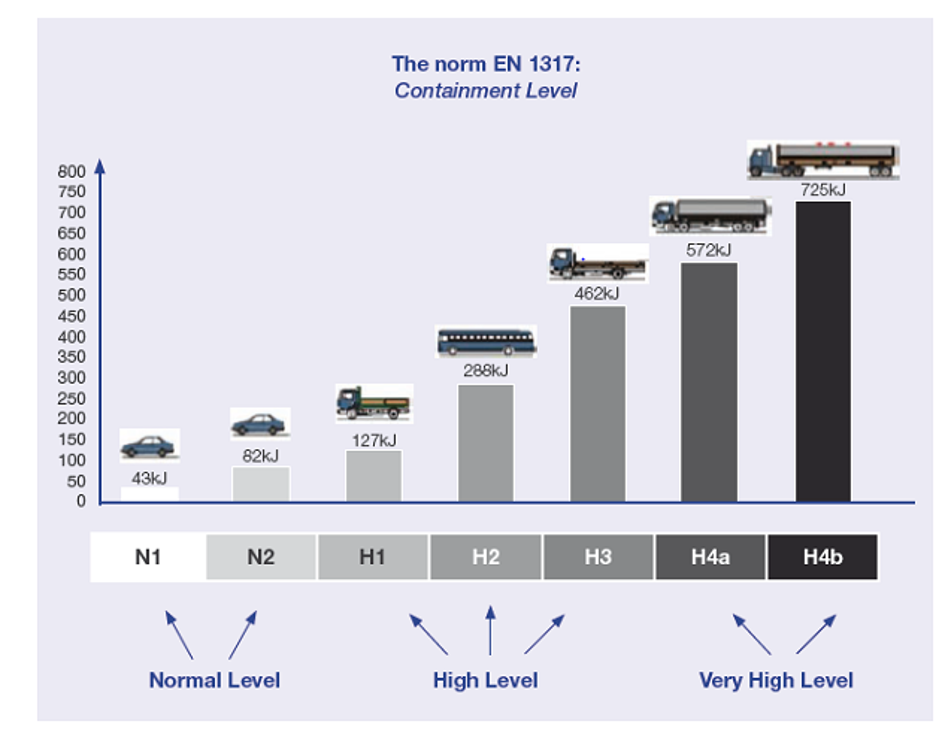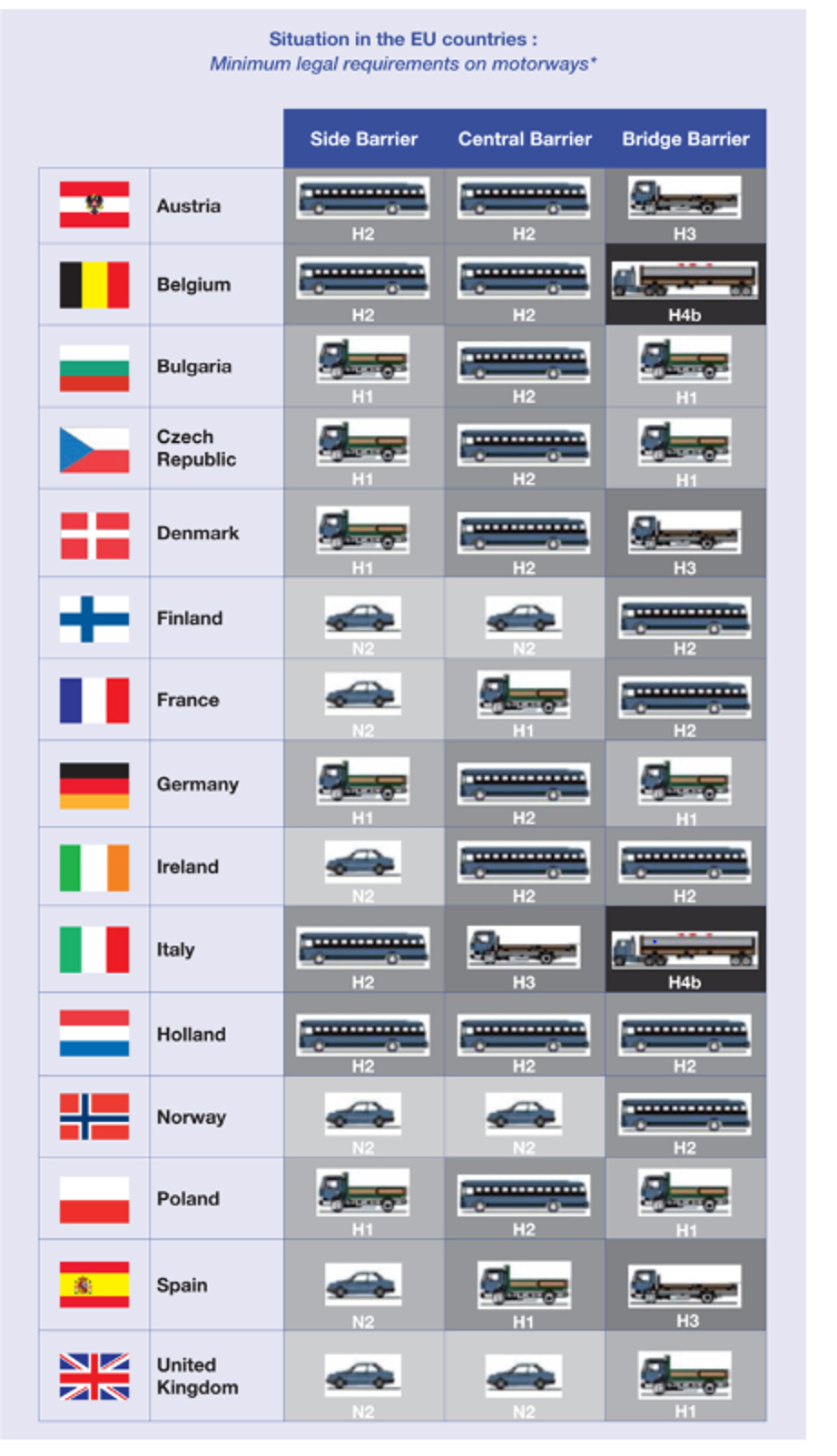Topics of Interest
This section contains useful information about various topics of interest for road restraint systems in Europe. The information available is the result of the work of the ERF Road Restraint Systems Working Group.
Installation Guidelines for Road Restraint Systems in EU Countries
The installation Guidelines for the following countries are available:
- Switzerland– Sécurité passive dans l’espace routier – Norme de base / Sécurité passive dans l’espace routier – Dispositifs de retenue
Situation of Road Restraint Systems on the TEN-T in selected European Countries
While the EN 1317 for Vehicle Restraint Systems (Safety Barriers) guarantees common testing methods for RRS across EU Member States, it is up to national governments to decide the level of protection on their road network. As a result, European drivers are confronted with varying levels of RRS protection on the European motorway network despite the fact that speed limits and driving conditions are very similar.
Research with the ERF Working Group on Road Restraint Systems has revealed striking differences between countries. For example, for side barriers on motorways, the French authorities require an N2 barrier designed to withstand a collision of 1,5 tonne passenger car travelling at 110km, whereas the major part of the other EU authorities require an H2 level, which means a barrier designed to safely redirect a bus of 13 tonne!
The following tables provide a brief graphical representation of the different containment levels as well as an overview of the situation in selected European countries.


In this context, the ERF calls on the Commission to examine the introduction of a minimum EU-wide RRS protection across the Trans European Network establishing a minimum safety level to achieve on the most important European road resource.
The role of notified bodies for the certification of VRS
Since 1 July 2013, all vehicle restraint systems for non-temporary use sold within the European Union and which are subject to the provisions of the Construction Products Regulation (CPR) must bear a ‘CE Marking’, i.e. prove that they comply with the requirement of Annex ZA of the European Standard hEN 1317-5.
As the responsible organisations for the issue of EC Certificate of Constancy of Performance (hereafter CE Certificates), Notified Bodies essentially act as the ‘passport issuers’ for the internal market and as guarantors of quality with the European Union where an appropriate European Directive of Regulation is in force. As such, it is imperative that any appointed or accredited notified body possess sufficient knowledge that is updated at regular intervals when dealing with the certification of vehicle restraint systems.
Since 2011, ERF has become aware of specific practices amongst certain notified bodies that are inconsistent with the provisions of the CPR and which result in undermining firstly the coherence of the internal market for vehicle restraint systems and secondly, could result in unsafe or non-compliant systems being installed within the EU and non-EU countries that may utilise hEN 1317-5.
In response, the ERF working group on Road Restraint Systems has elaborated a position paper is to raise its concern amongst the relevant bodies (European Commission, Member State authorities, Notified Bodies) about the current functioning of the system of notified bodies within Europe with respect to the certification of Vehicle Restraint Systems. Moreover, the paper proposes a set of recommendations which, in the opinion of ERF, could substantially improve the functioning of the system of notified bodies for vehicle restraint systems if implemented.
The paper is available here in the following languages: English, Italian, French
